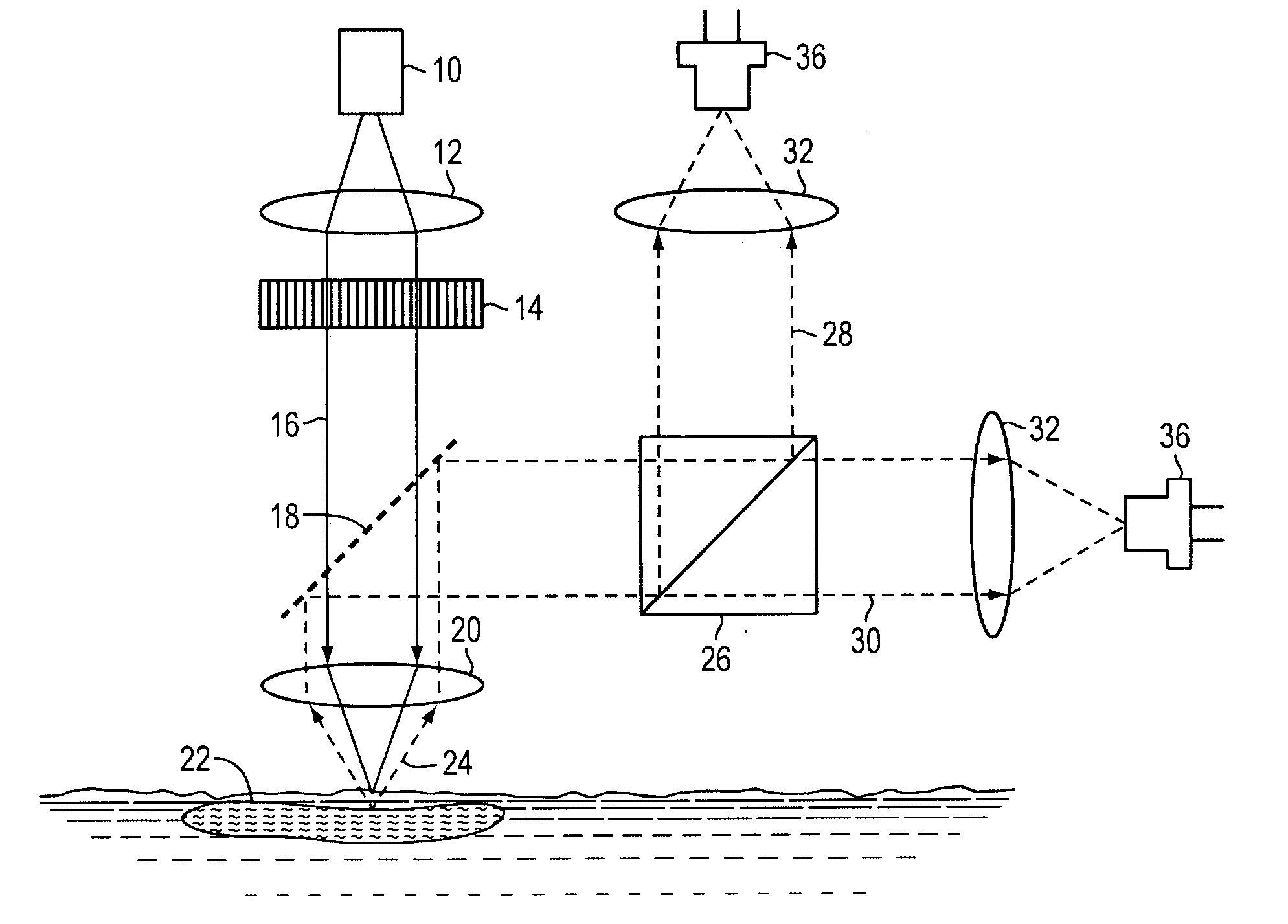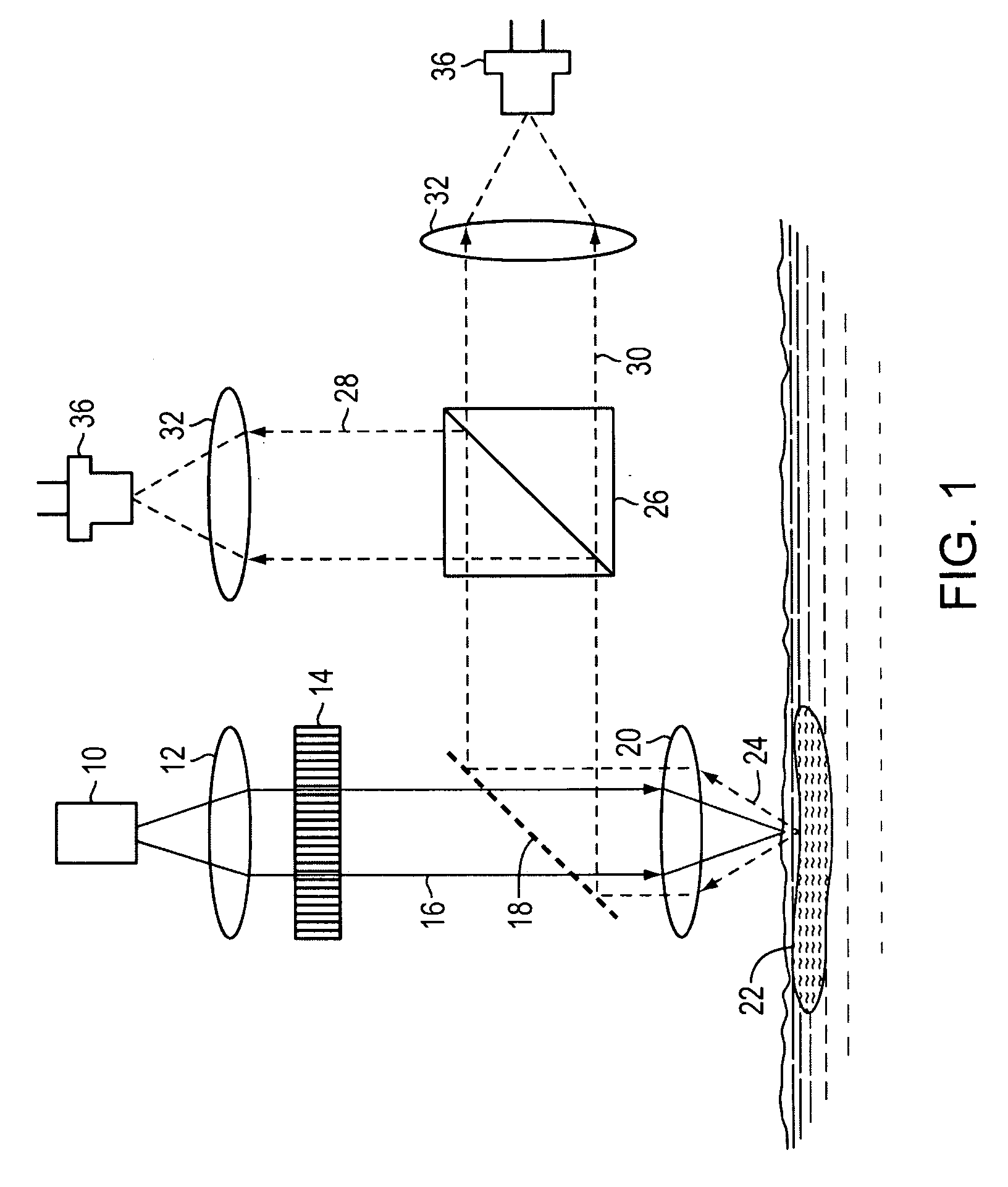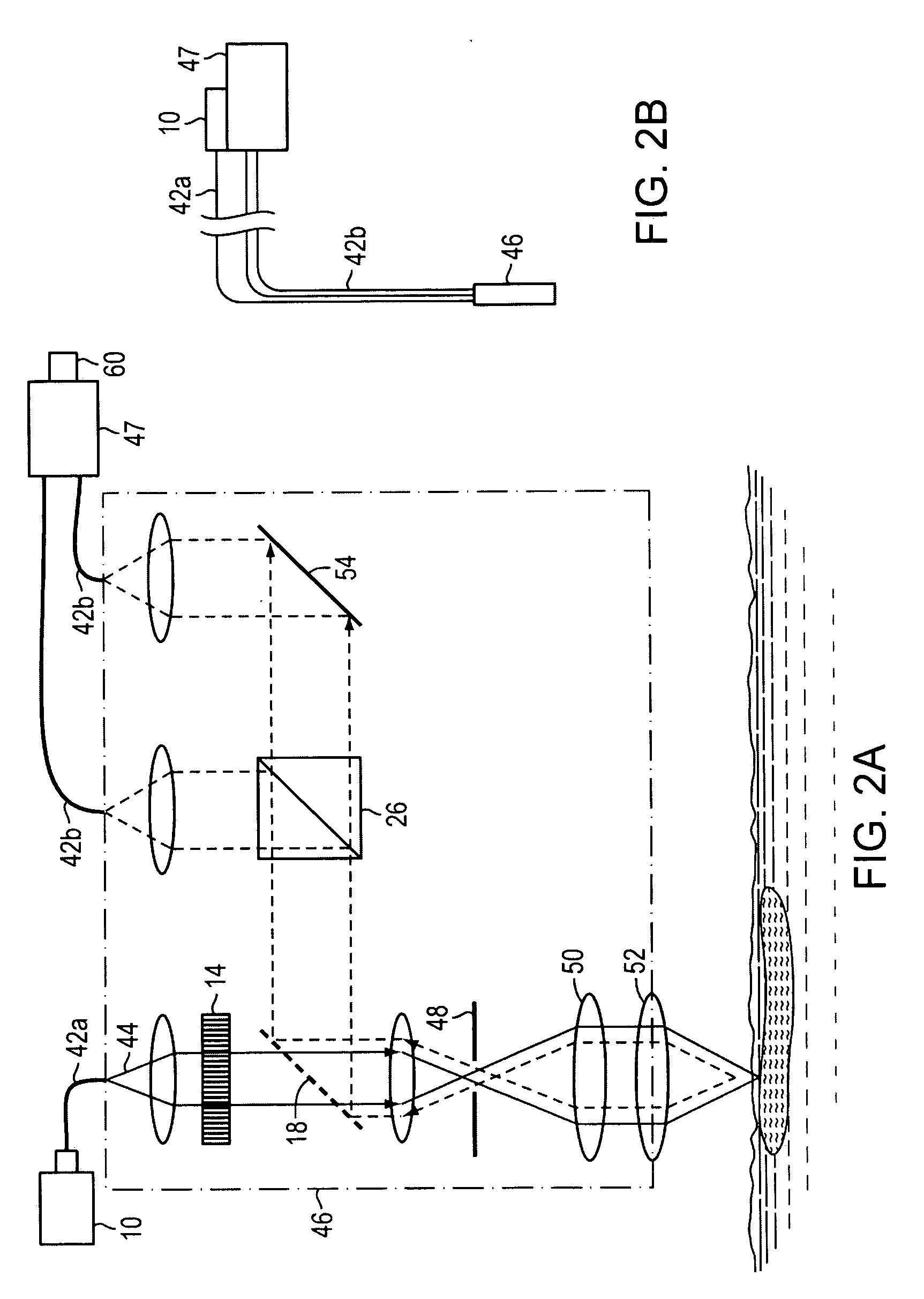Detection of heavy oil using fluorescence polarization
a technology of fluorescence polarization and detection of heavy oil, which is applied in the direction of luminescent dosimeters, optical radiation measurement, instruments, etc., can solve the problems of increasing the problem of pollution in lakes and oceans, exacerbate the problem of oil spills, and many accidents occur annually, so as to prevent interference from ambient sunlight
- Summary
- Abstract
- Description
- Claims
- Application Information
AI Technical Summary
Benefits of technology
Problems solved by technology
Method used
Image
Examples
example 1
[0035]Laboratory Tests. A laboratory setup suitable for measuring the fluorescence polarization spectra of various test samples was constructed. The excitation source was a 473 nm diode-pumped solid-state laser. The laser output was collimated by a 25 mm diameter f2 lens, transmitted through a linear polarizer oriented vertically, transmitted through a 45° dichroic filter, and then focused by a 25 mm diameter f2 lens onto the sample. The fluorescence emission from the sample was collected and collimated by the same lens, reflected off the dichroic filter at 90°, transmitted through a variable polarizer, and then focused by a 25 mm diameter f2 lens onto a 200-micron core optical fiber. The distal end of the optical fiber was coupled to a spectrograph that disperses the fluorescence signal into discrete wavelengths that are detected with a CCD detector. The vertical and horizontal fluorescence polarization spectra were recorded sequentially by manually rotating the variable polarizer ...
example 2
[0040]Field Tests. For field testing, a fluorescence polarization probe of configuration similar to that illustrated in FIG. 1 was mounted in a waterproof enclosure. The main components of the probe were a fiber-optic fluorescence polarizer and a telescopic focusing / collection optic. The fiber-optic fluorescence polarizer utilized three miniature optical trains (laser excitation, perpendicular FP collection, and parallel FP collection) arranged in a backscattering light-collection probe configuration. The probe telescope was a simple refractor telescope having a 50 mm diameter, 100 mm focal length objective lens and a 9 mm diameter, 11 mm focal length eyepiece. The telescope was used to focus the laser beam onto the sample and also to collect the fluorescence emitted by the sample. With the telescope as the front optical component of the fluorescence polarization probe, the probe in this example can detect fluorescence signals from fluorescent samples less than one meter to several ...
PUM
 Login to View More
Login to View More Abstract
Description
Claims
Application Information
 Login to View More
Login to View More - R&D
- Intellectual Property
- Life Sciences
- Materials
- Tech Scout
- Unparalleled Data Quality
- Higher Quality Content
- 60% Fewer Hallucinations
Browse by: Latest US Patents, China's latest patents, Technical Efficacy Thesaurus, Application Domain, Technology Topic, Popular Technical Reports.
© 2025 PatSnap. All rights reserved.Legal|Privacy policy|Modern Slavery Act Transparency Statement|Sitemap|About US| Contact US: help@patsnap.com



